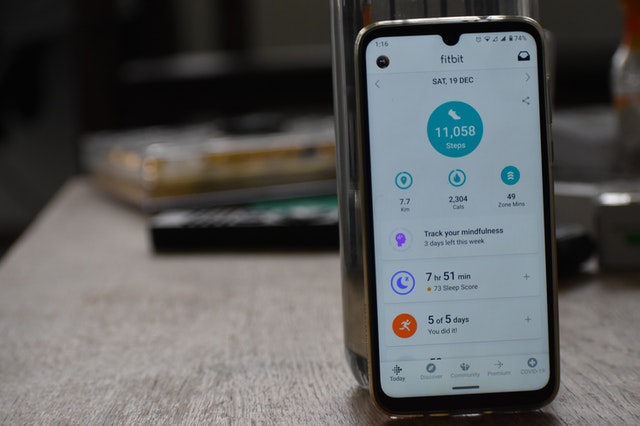
Smartphones cram several useful functions into a small device that fits in your hand. If you’re trying to improve your health, your smartphone is an incredibly useful tool. Use your phone to help you track your eating and activity, get new exercise routines, and even learn healthy habits. Here’s how.
Track Your Steps
If you’re trying to be more active, take advantage of the many smartphone apps with pedometers, which count your daily steps. The iPhone comes pre-loaded with the Apple Health app, which automatically tracks your daily steps, stairs climbed, walking and running distance, hours of sleep, and other important health data. The app also shows your averages over different time frames and lets you know how you’re doing compared to another week, month, or year. Android users can download Google Fit, which boasts many of the same features, including a pedometer that counts your steps as you run, walk, or cycle. Google Fit will also estimate how many calories you’re burning.
Both of these apps work automatically in the background—after you download them and complete the initial setup, you don’t have to open the app before you go on a walk or run. As long as you keep your phone on you, the app will track your activity. You may be surprised how many steps you take. Even if you don’t run or take walks, you still may be racking up lots of steps throughout the day, simply by doing housework or walking around at work.
When you’re first starting out, keep your phone with you for a few days or a week, and see how many steps you take every day without trying. Then, set a goal to increase your average daily steps. For a long time, the standard advice has been to aim for 10,000 steps a day. However, if you are mostly sedentary, increasing your steps to half that number (5,000 steps a day) can still benefit your health. Remember that fitness goals should be challenging, but not overwhelming.
Research has also called the 10,000-steps standard into question. A study published in the Journal of the American Medical Association that tracked 17,000 women found no substantial difference in mortality rates among women who averaged 7,500 steps per day and those who averaged more.
Create a Workout Plan
Maybe you want to start exercising, but you’re not sure what to do. You could go to a gym and pay a personal trainer to show you some exercises, or you could simply download an app with workout routines. There are literally thousands of such apps, so the hard part is finding one that meets your goals.
If you want to get started with running, the Couch to 5K app is a popular choice. This app provides an easy training plan for beginners that incorporates periods of walking in between periods of running. The app tells you when to run or walk. Over time, you’ll walk less and run more, until you can run the whole 5K without stopping. The app costs USD $2.99 to download, but there are many similar free apps that follow the same basic method.
Other popular, highly rated fitness apps include Home Workout – No Equipment, which is perfect if you don’t have access to a gym; Daily Workouts Fitness Trainer, which offers quick workouts you can fit into a busy day; and Workout Trainer: Fitness Coach, which has thousands of workouts and customizable training programs. These apps are free to download and do not charge a monthly subscription fee for the basic version, though you may have to pay to access premium features.
Be Mindful of What You Eat
When it comes to getting healthy, exercise is only half the battle—what you eat is also extremely important. This is especially true if you are looking to lose weight, a process that depends on eating fewer calories than you burn through exercise. Luckily, your smartphone can help you monitor your diet and make better choices.
MyFitnessPal is probably the most popular food diary app around. It allows you to log what you eat every day and automatically adds up the calories. Since it has a database of more than 14 million foods with nutritional information, you never have to guess how many calories or nutrients any food contains. In addition, MyFitnessPal automatically tracks the calories burned from your daily step count, so you can see your daily totals for both calories consumed and calories burned. You can also see daily totals for macronutrients like carbohydrates, protein, and fat.
Other great food diary and calorie-counting apps include YouAte, a visual food log where you snap photos of every meal; Rise Up, which can give you insights into your emotional relationship with food; and Fooducate, a food diary that helps you understand the nutritional quality of your diet, not just calories consumed.
